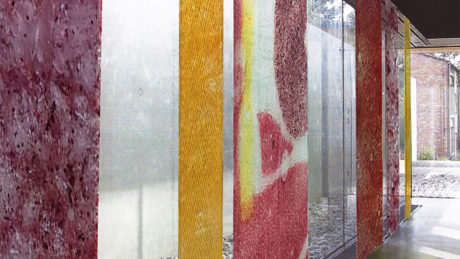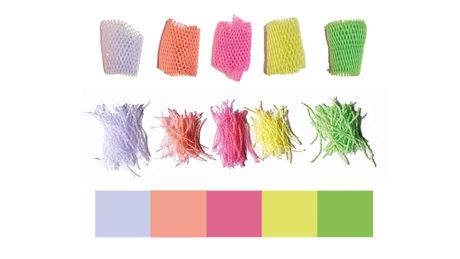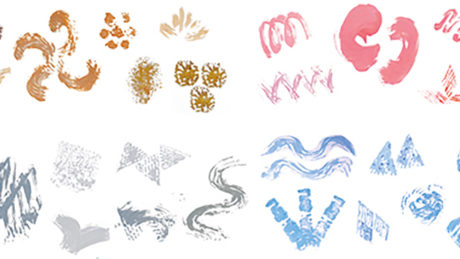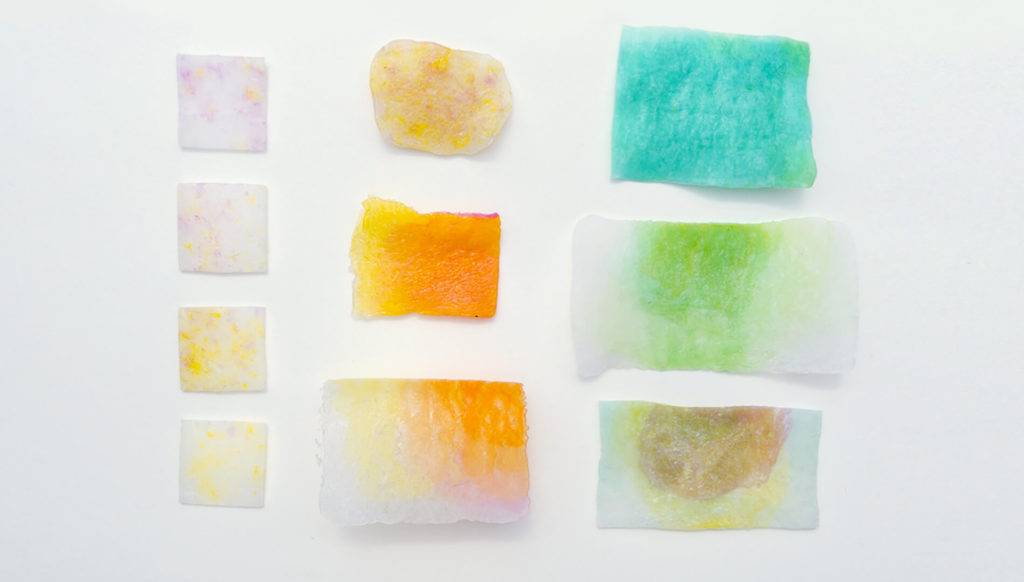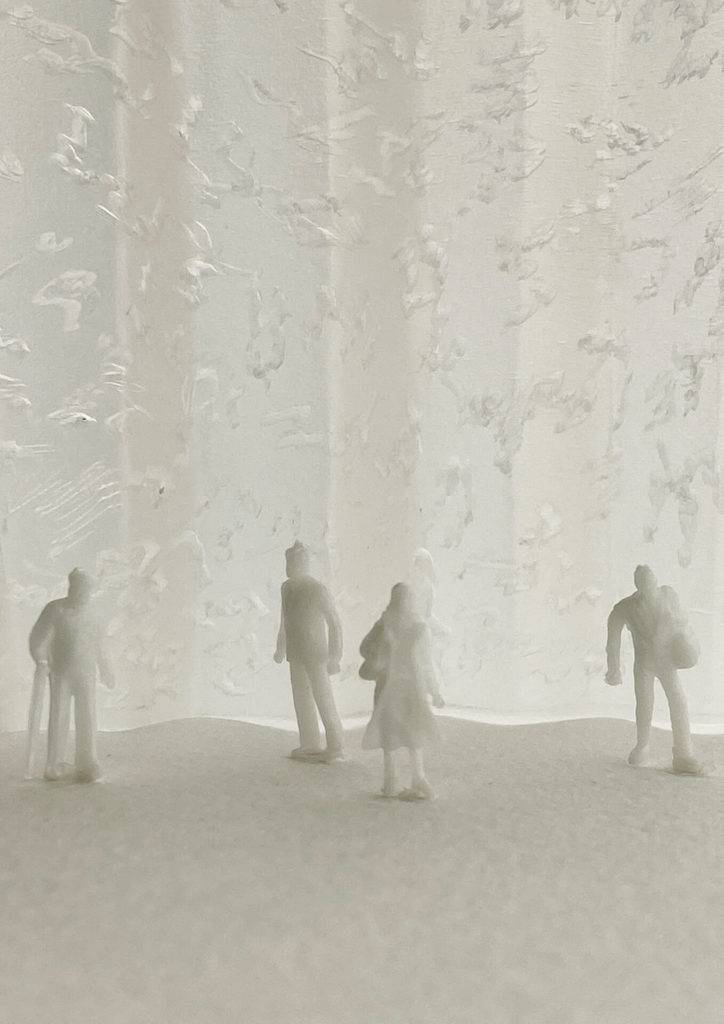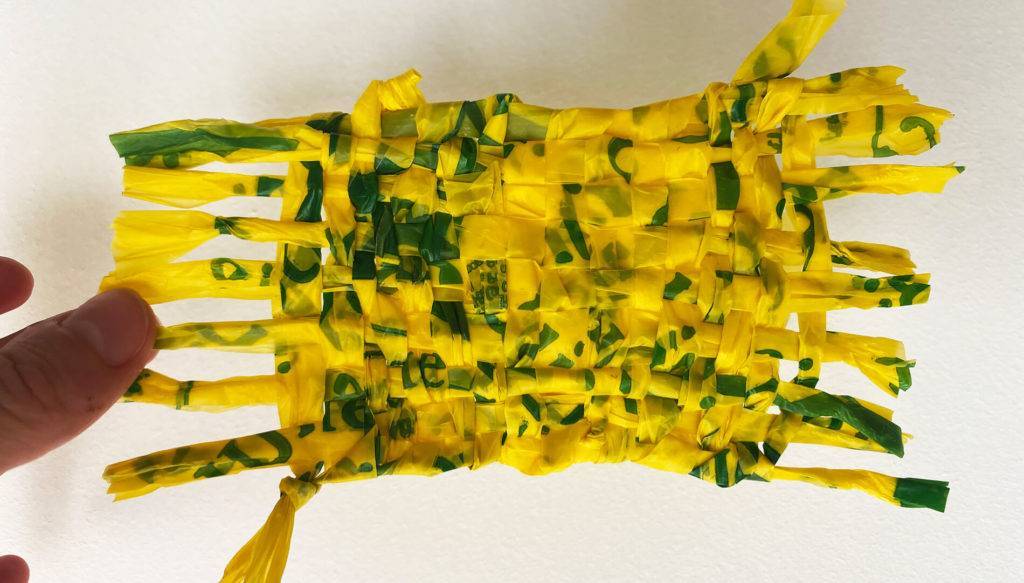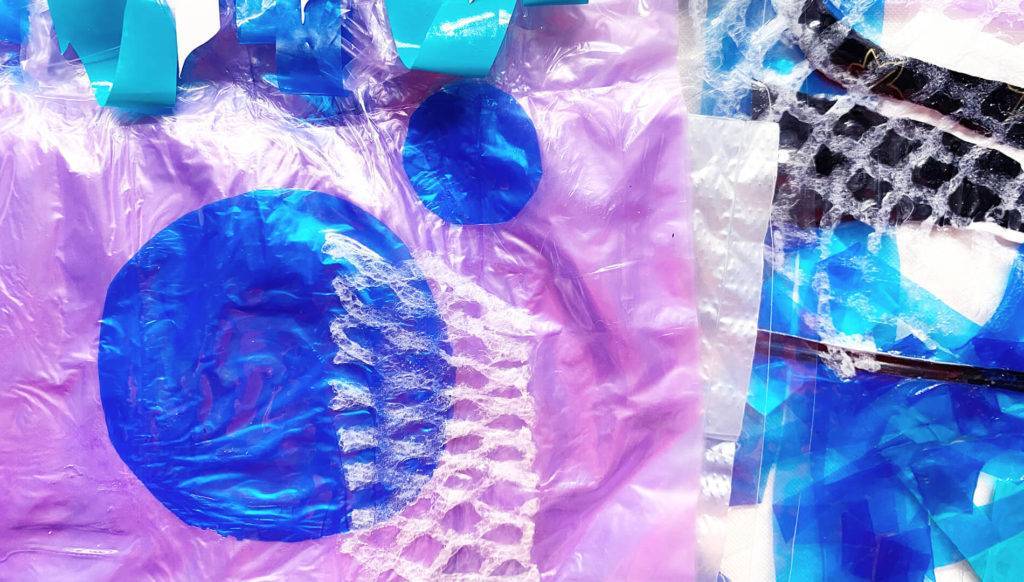Each year, PG teams up with the Royal College of Art in London to run an industry brief with the MA Textiles course. The project is an opportunity to forge closer links between design practice and education, and offers students an opportunity to apply their skills to real life challenges.
In 2020, the global pandemic led to many changes in the way we live, work, consume and interact with daily objects. Vast numbers of items are now wrapped in plastic for hygiene and safety reasons or simply for an enhanced perception of cleanliness. But as a society, we must continue to work towards a more sustainable world. And as designers, we have a responsibility to develop solutions to reduce our waste and increase our positive impact.
This year, the students were challenged by our Colour, Material + Finish (CMF) team to use single-use plastic waste to create new materials. They were asked to reuse, rethink and redefine this wasted resource, but using only what they would normally consume. The brief was to find creative solutions for new surfaces based on aesthetic and practical principles and taking into account the energy consumption used for the process of repurposing the source material. The students were free to consider how their new materials, surface finishes or textures could be used in different environments, whether in retail spaces, restaurants, hotels or transport environments, whether it be on a scooter, electric vehicle, a train station or airport lounge.
The students tackled the brief in the most difficult times with great enthusiasm and passion, addressing one of the biggest challenges of our time and creating beautifully handcrafted solutions.The CMF team loved the transformation of polystyrene into new surfaces with extended properties and the clever addition of natural colour pigments and image transfers in Bethany’s work. Henrietta’s unravelling of fruit nets provided a beautiful solution to re-weaving a mono material that then can still be recycled and Yuke’s playful approach in creating tools to educate children provided a great transformation into reuse and education. We found that they all provided very different solutions to the same problem but all very well grounded.
This digital exhibition showcases the work of 11 students whose projects were selected.
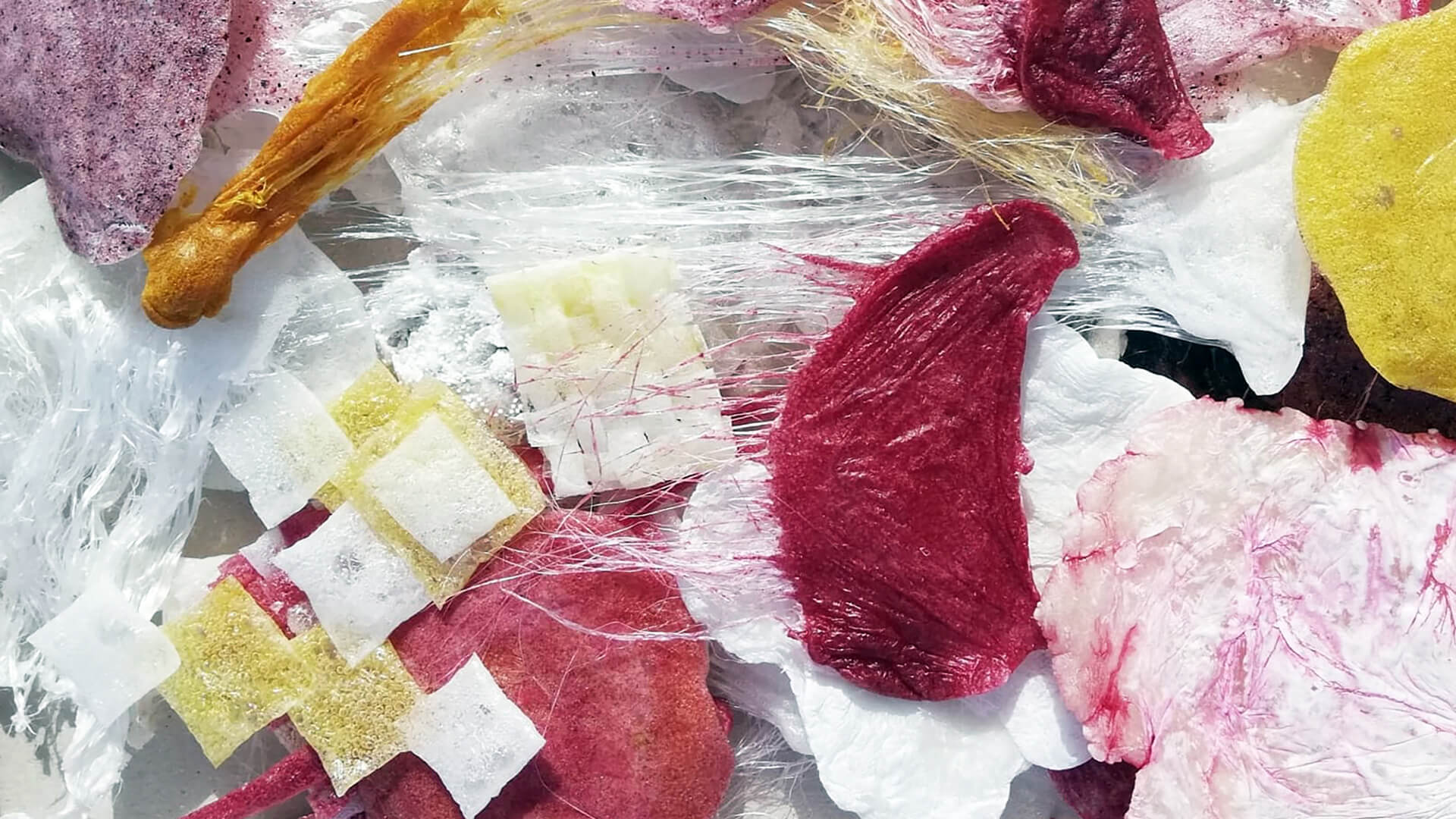
Expanded Polystyrene
Voak’s project reimagines the lifespan and potential uses of expanded polystyrene. With the continued growth of online shopping, especially as a result of the pandemic, there could be a greater abundance of polystyrene packaging than ever before. Voak’s research found that while polystyrene is 100% recyclable, it is not commonly recycled in the UK.
Her material exploration and dye processes were carefully considered to limit environmental impact. During her experiments, she found an organic compound that causes the polystyrene to change into a moldable consistency. The resulting material is hard compared to the soft, slightly spongy original polystyrene, and can be smooth or textured as desired. By rethinking this single use plastic, Voak hopes to shine a light on an issue in the UK recycling system and also show that the uses of polystyrene can go beyond the packaging and thermal insulation that it is commonly known for.


Unwanted and underrated packaging, 98% air, lightweight, organic architecture, soft, slightly spongy, bubbly.

Smooth, synthetic, silky, thick or thin, flat or 3D, stable, solid, marble, airy, translucent.
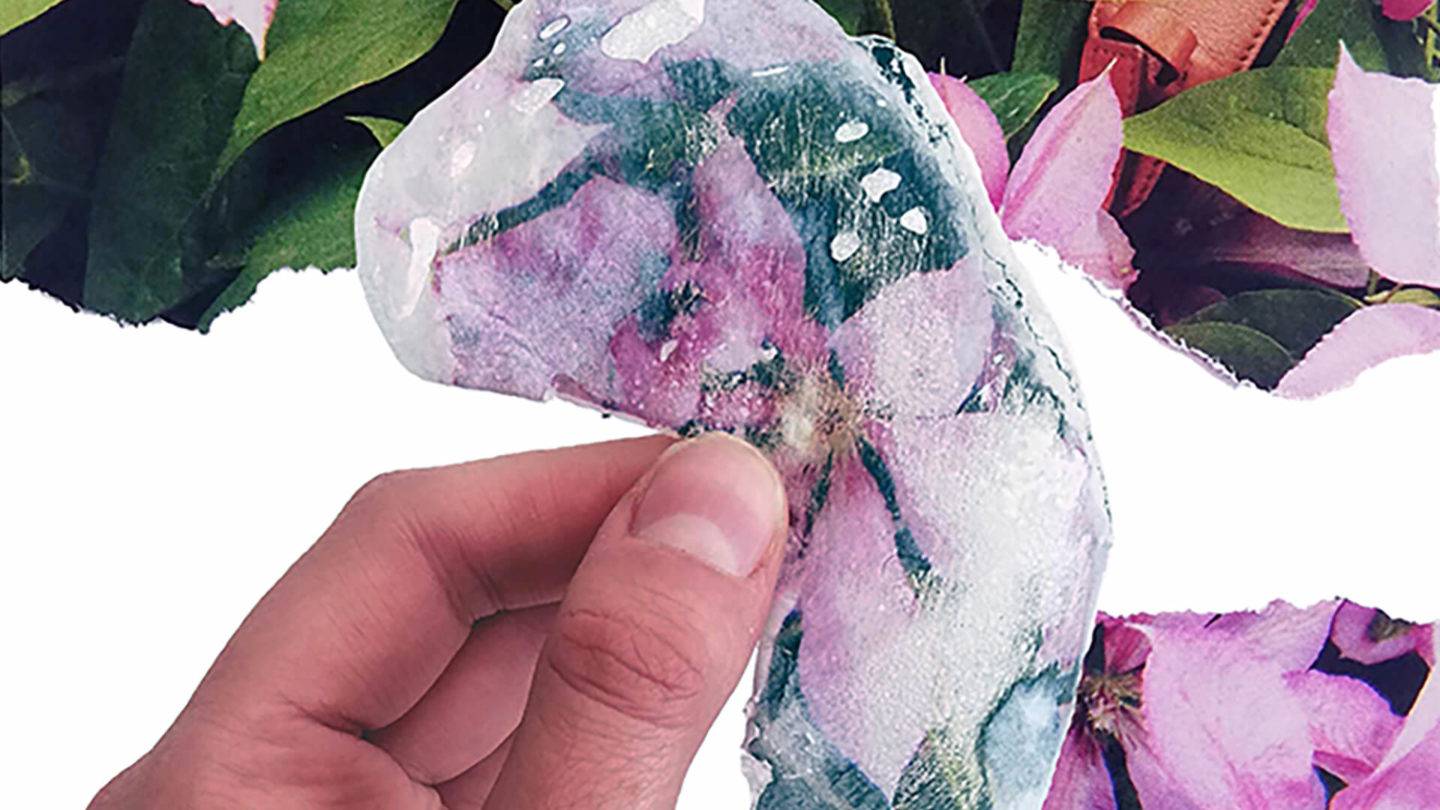


Recrafting Value
Ravel, Unravel, Layer
Dent used two overlooked plastics to create new materials for use in commercial hospitality and transport interiors. Polypropylene and Polyethylene nets are found in supermarket waste streams. Both are strong, lightweight and can be coated with antimicrobial properties to suit a post-pandemic world. Dent worked with the brightly coloured materials, manipulating them through plying, weaving and heat setting to create mottled effects in subtle colour palettes, whilst adding strength and longevity to the materials. The resulting textiles allow colour and light to diffuse, encouraging a closer look. The new mono-materials can still be recycled in a closed loop system.

Low-density, lightweight and hydrophobic polypropylene and polyethylene nets found in supermarket waste streams.

This semi-rigid woven surface is smooth, malleable, strong, mottled, translucent and long-lasting. The textiles allow colour and light to diffuse through.

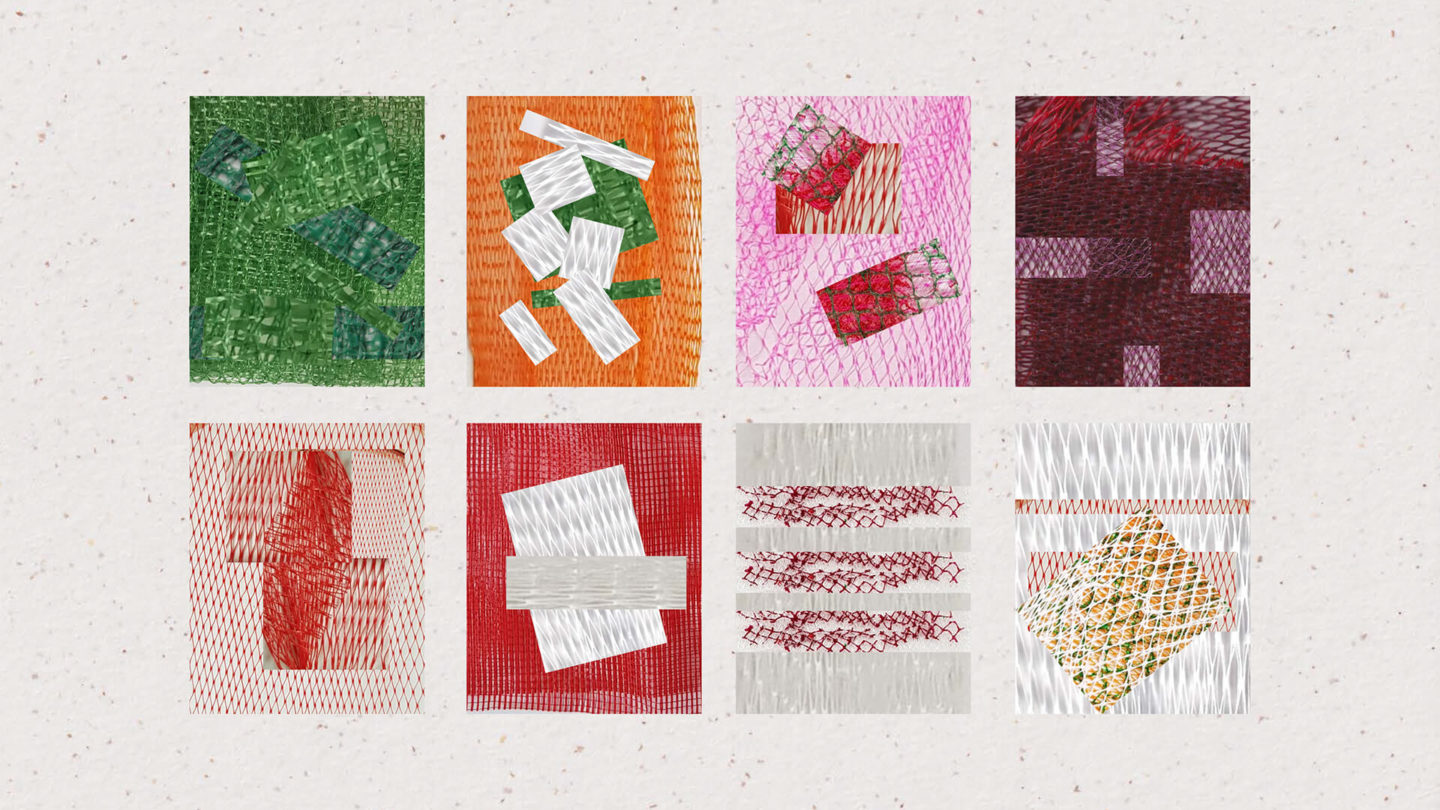


Tracing
Tracing is a set of painting tools made of recycled single-used EPE fruit net foam. Inspired by relational aesthetics in contemporary art, Liu’s project focuses on the interaction between users, products, and environment. The recycled single-use plastics can be used as tools to leave marks and to build relationships between customers and designs. They also represent the physical effects of pollution and aim to raise awareness of the damage caused by plastics. The colour palette is divided into four groups, “soil”, “body”, “ocean” and “air”, corresponding to the four key areas impacted by single-use plastics. Tracing can be applied in museums, creative workshops, retail stores, domestic settings and more. It is unique, playful and recyclable.


Drift
Drift aims to communicate the value of the ephemeral through the slow process of craftsmanship. Inspired by the strength and softness of water, Pei-Fen’s project embodies the idea of fluidity and movement by transforming single use plastic from a disposable product into new materials. Pei-Fen wanted to challenge the idea that plastic wrapping is fragile by deconstructing and reconstructing polyethylene wrapping into surface materials with a delicate aesthetic, which could be used for interior application. The contrast between the organic texture of her material and the repetitive flow of the sea further inspired her exploration into irregular patterns and modular designs. Playing between fragility and protection, mass production and handcraft, Drift epitomises the modern time: an inevitable coexistence between nature and the man-made, destruction and opportunity in the Anthropocene.
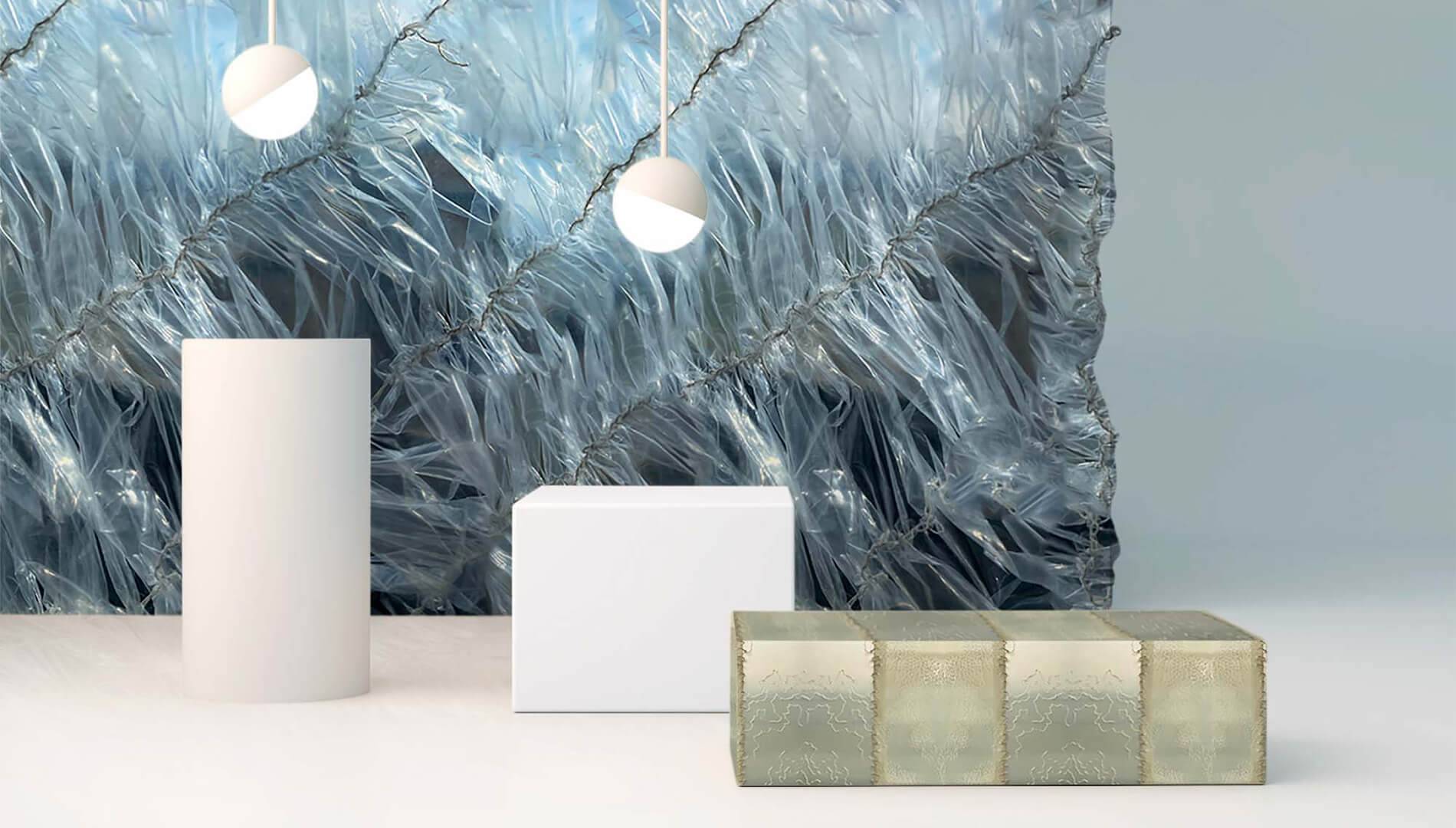
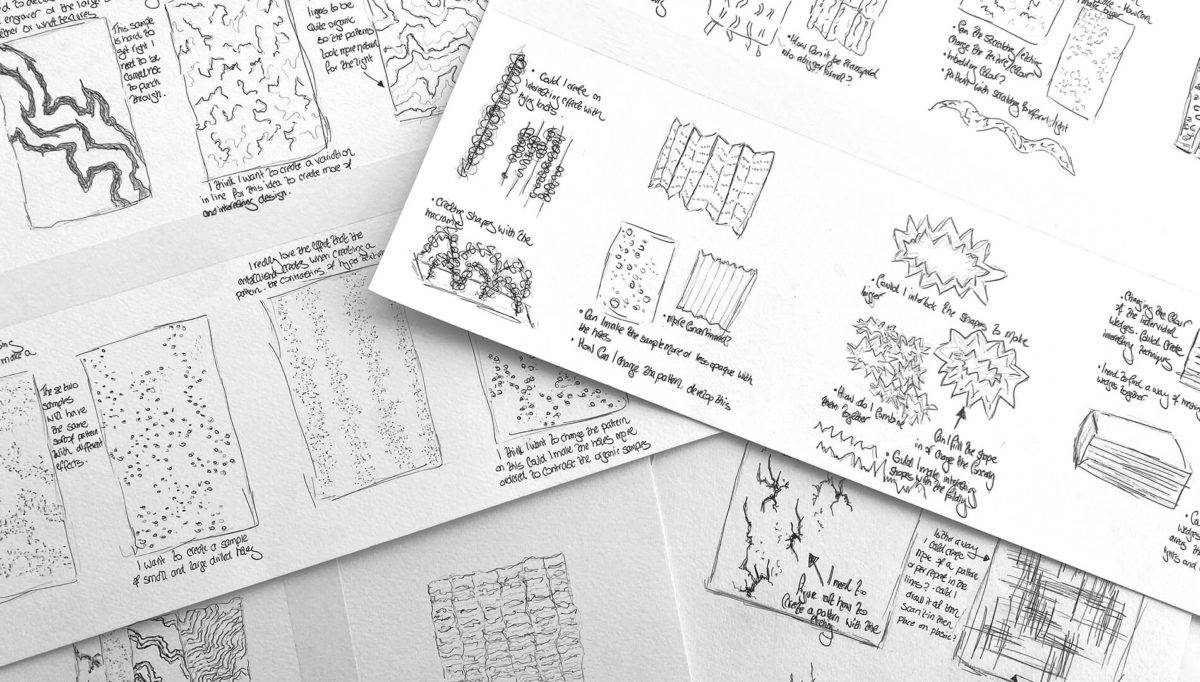
Sensorial Plastics
When Covid 19 hit, many recycling centres in the UK were temporarily closed due to concerns regarding the spread of the virus. Scott’s project centred around finding ways to reuse plastic waste that would most often be sent to landfill or disused recycling points. Working with domestic supplies made from HDPE and PET such as milk cartons, clothing packaging and shampoo bottles, Scott was interested in creating sensorial experiences with the plastics for use in future multi-use retail environments for 2025. Using no heat and slow design processes such as hand stitching and pleating, she was able to create material samples that appeal both visually and through touch. Scott wanted to help people create a deeper emotional connection to the plastics which would in turn make them more respectful of materials.

Plastic is not just an ocean issue. It is also a desert issue
Plastic bags are one of the biggest contributors to the Middle East’s plastic problem. They get blown across the desert even if disposed of properly, resulting in harm to the natural landscape and wildlife. Using plastic bags as her source material, Wilkinson sought to embrace the transformation of this material as a way to extend and reveal its hidden potential. She approached this by inverting and challenging the material’s properties. Through this transformation, the value of the plastic bag is elevated thus challenging perception and demonstrating its potential for alternative uses. Inspired by the success of the UAE’s first drone taxi test, Wilkinson focused on applying her newly created materials to lounge interiors in drone taxi airports.
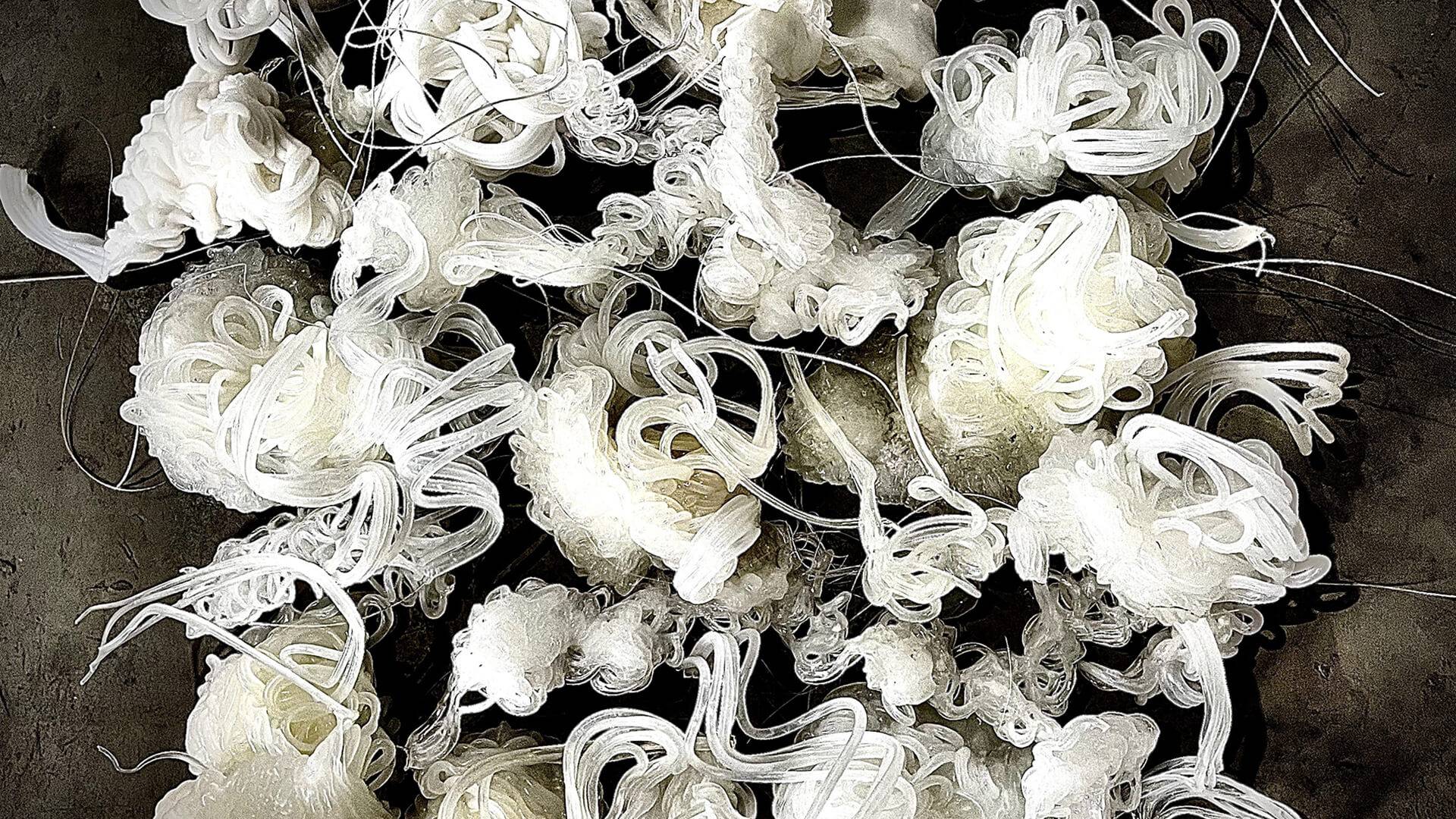
Multi-dimensional thinking on recycled plastics: Repple plastic project
Chen used the acoustic properties of expanded polystyrene as her starting point. Exploring the sounds of nature and the sounds of the city as her creative inspiration, she designed a distinct aesthetic made from recycled expanded polystyrene. Her main design method consisted of collecting sounds, analysing the data thereof and using it to generate intricate patterns. Chen explored a range of methods to transform her source material, including laser cutting, 3D printing and weaving. The resulting re-worked expanded polystyrene is suitable for a range of applications, from soundproof walls to stuffing for toys, 3D printing filament or furniture filling.







Buddha+stic
Buddha+stic is derived from the idea of community collection, looking in particular at specific events where participants are most likely to have natural incentives and shared values. Hong looked into the Buddhist community in her hometown, Fujian and collected waste generated during temple rituals. She was struck by the dichotomy of a negative impact – waste – born out of a practice filled with good intentions – religious ritual. The materials she collected were mostly the same across each site: incense packaging, red plastic bags and tea light cups. Using these materials, Hong wished to design a remote ritual that responds to a post-pandemic environment. Instead of putting money into offertory boxes, users bring the plastic waste from their ritual, recording the deed on an app, where they can also track the application of the plastic they contributed. Hong’s final design is a lotus shaped table lamp made from remoulding the collected plastics, which emits the scent of incense when being used. The Lotus shape is a common signifier in Buddhist culture that represents purity and dignity.
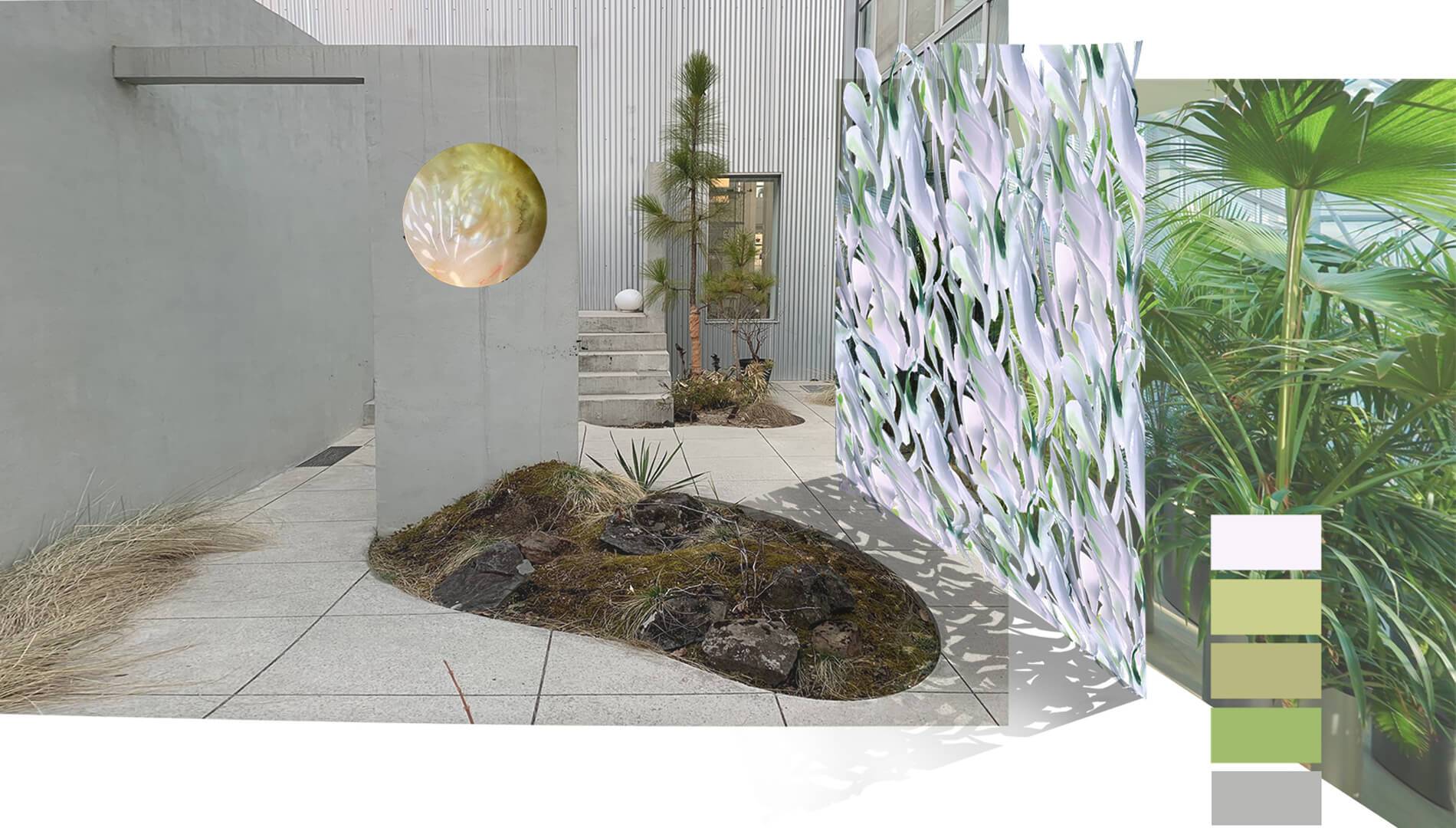
Plastic Planet
We can’t imagine a world without plastic. And while some of it can be reused or recycled, single-use plastics are either landfilled or incinerated, causing environmental pollution. Kyurim used her own consumption as her starting point, working specifically with HDPE bottle lids, which are widely used in everything from milk bottles to household products but seldom effectively recycled. Using Precious Plastic’s open-source technology, she transformed this HDPE waste into a translucent material in different shades and patterns, which can be used to great effect in interiors, particularly when combined with light.



“Don’t throw me away, I can be used again.” — Plastic
Liu’s project is founded on the belief that if plastic becomes seen as a beautiful, delicate and multifunctional material that can be reused again and again, people will be recycling plastic continually, thus reducing the amount of new plastic in the world. By melting and weaving PVC and polypropylene, she was able to create a new textile. An infographic representing the dangers of plastic pollution has been transformed into a pattern printed onto this fabric. Using magnets, plastic ropes and accessories, consumers can use her recycled plastic fabric to create a range of bags, storage boxes or home accessories.

Transformer X – Plastic Future
Zhang’s project illustrates her vision for the endless potential of plastic as a raw material to define future material solutions. ‘X’ refers to an undefined future while ‘Transformer’ represents the multiple possibilities and transformations of plastics. After identifying three major problems in current plastic recycling systems, Zhang built a full-scale systematic design model. Her experiments combined aesthetic ideals with science, and were based on an exploration of plastics on a molecular level. Zhang used recycled plastics and water to create new materials, which she calls Water Driven Surfaces. These capture the delicate chemical reaction that occurs when water molecules disrupt the forming process of plastic molecules, changing their inner structure and physical properties, offering new materials that can be used in a wide range of environments.

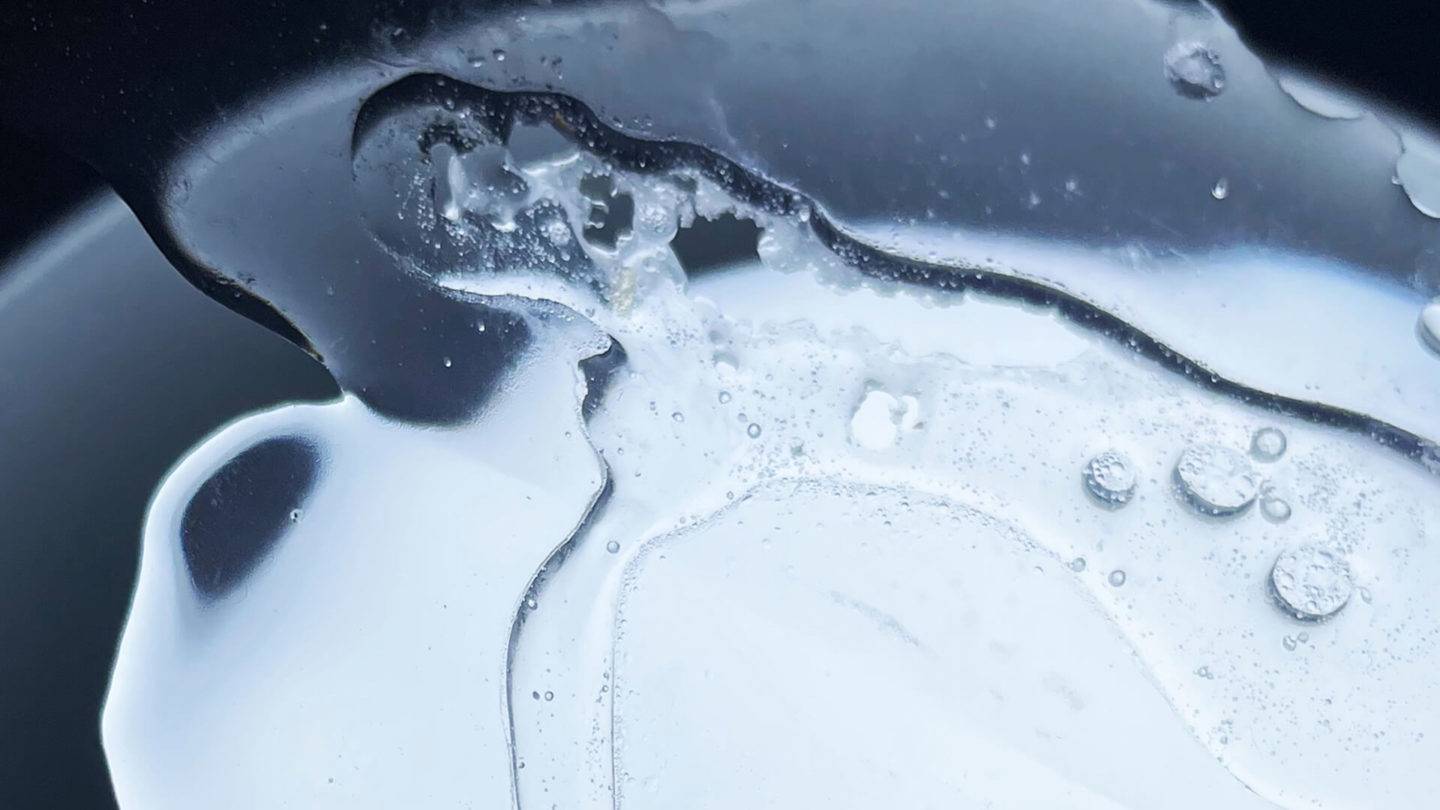

This exhibition is part of the official programme of the London Design Festival 2021.
Thank you to the Royal College of Art for our continued partnership. Special thanks to Jemma Ooi, Anne Toomey and Claire Miller. Thank you also to all the students who took part in this project for their resilience, creative thinking and resourcefulness during challenging circumstances.
Images courtesy of the students.
